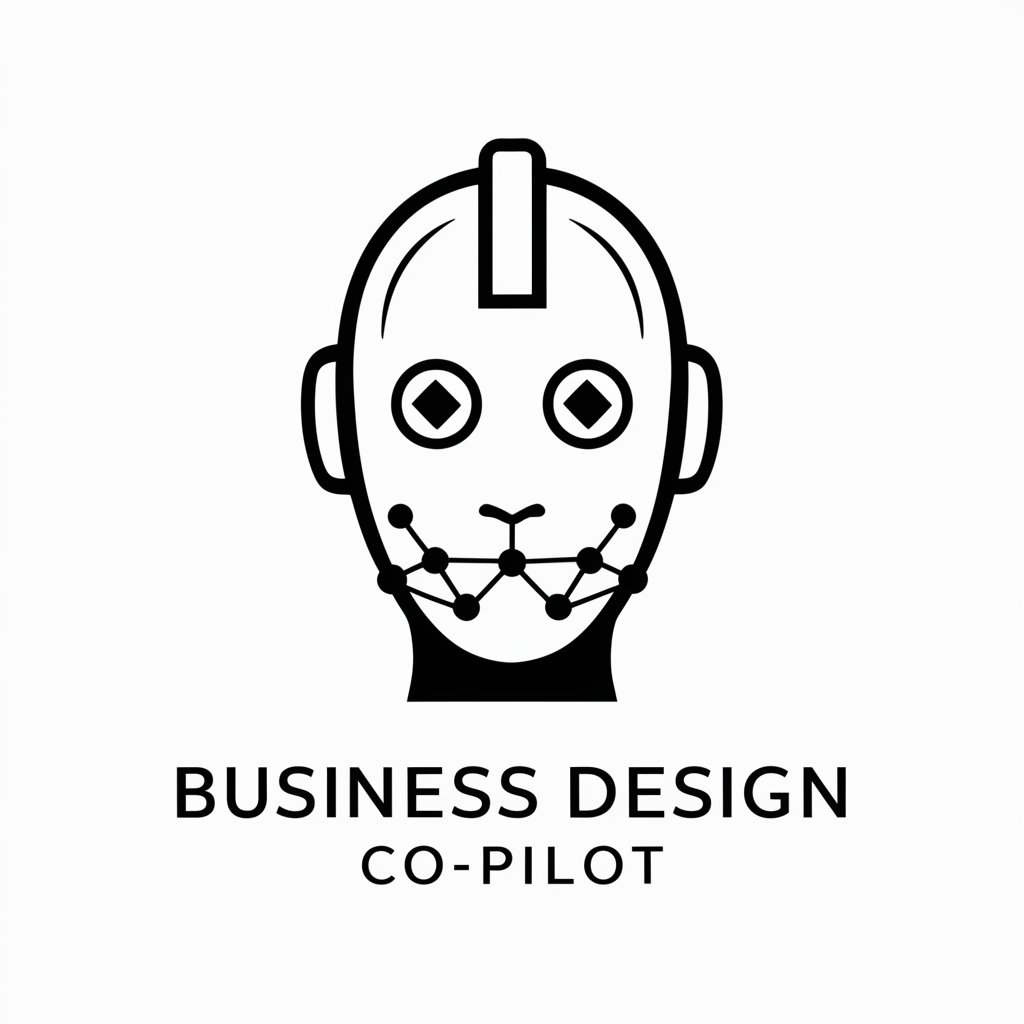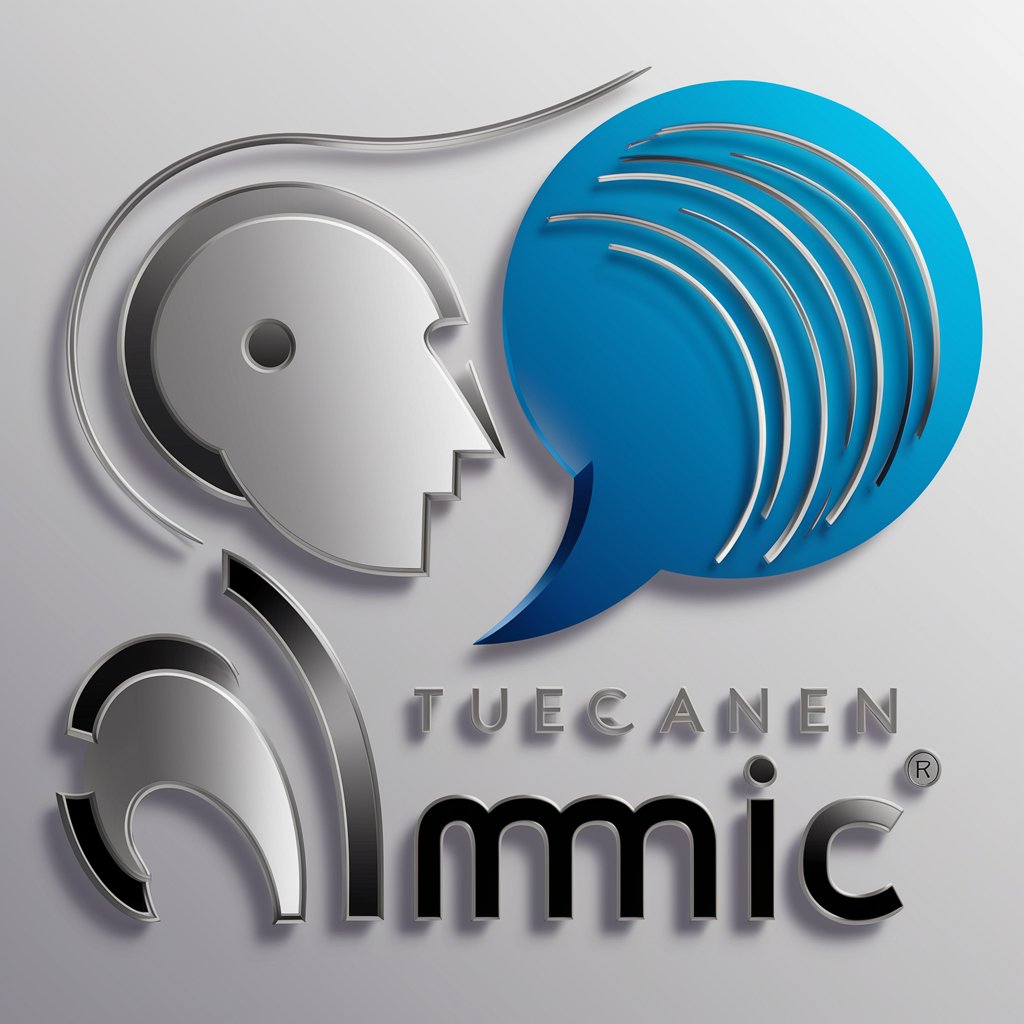Business Design Co-Pilot - Business Strategy Guidance

Welcome to the Business Design Co-Pilot.
AI-Powered Business Strategy Innovation
Describe the key phases of the business design process.
How does business design differ from design thinking?
What roles are essential for a successful business design project?
Explain the importance of iteration in the business design methodology.
Get Embed Code
Introduction to Business Design Co-Pilot
The Business Design Co-Pilot is designed as a specialized tool to assist users in navigating the complex landscape of business design, a discipline that integrates strategic thinking, design methodologies, and business acumen to develop innovative solutions and models. Unlike traditional design thinking, which primarily focuses on ideation and problem-solving, Business Design Co-Pilot is tailored to address the end-to-end process of creating, validating, and implementing business models and strategies. An example scenario where the Co-Pilot proves invaluable is during the initial phase of a startup, where founders must align their product or service design with viable business models, customer needs, and market demands. The Co-Pilot aids in structuring this alignment through a detailed understanding of roles within a project team, the business design process, and the application of specific tools and methods for each phase of project development. Powered by ChatGPT-4o。

Main Functions of Business Design Co-Pilot
Guidance on Team Composition
Example
For a new venture aiming to disrupt the fintech industry, the Co-Pilot advises on forming a project team with a balanced mix of skills, including a Team Manager, Team Experts in areas like engineering and finance, and a Business Design Coach. This ensures a diverse set of viewpoints and expertise, crucial for tackling complex challenges.
Scenario
When assembling a team, the Co-Pilot suggests roles and responsibilities, emphasizing the importance of having a compact team for efficiency and suggesting how to engage external experts for occasional needs.
Process Navigation
Example
A corporation looking to innovate within its product line would benefit from the Co-Pilot's detailed breakdown of the Business Design process, from the Discover phase through to the Decide phase. This structured approach enables the company to systematically explore customer needs, validate business hypotheses, and make informed decisions on project progression.
Scenario
The Co-Pilot outlines each phase's key activities and tools, assisting teams in managing the iterative design and validation cycles effectively.
Application of Tools and Methods
Example
An SME aiming to pivot its business model in response to market changes would utilize the Co-Pilot to understand and apply various business design tools, such as business modeling and prototyping. The Co-Pilot provides insights into selecting appropriate tools for visualizing ideas, exploring open questions, and building lean offerings.
Scenario
Through practical advice and examples, the Co-Pilot facilitates the SME's navigation of the Validate phase, ensuring that hypotheses are thoroughly tested before making significant business decisions.
Ideal Users of Business Design Co-Pilot Services
Startup Founders and Entrepreneurs
This group benefits from the Co-Pilot's expertise in aligning innovative solutions with sustainable business models, navigating the uncertainties of launching a new venture, and leveraging strategic design to create competitive advantages.
Innovation Managers and Corporate Strategists
Professionals tasked with driving innovation within larger organizations find value in the Co-Pilot's structured approach to business design. It offers a clear process for exploring new markets, developing new products or services, and implementing change within existing structures.
Product Managers and Designers
This user group leverages the Co-Pilot for its insights into customer-centric design and development processes, ensuring that products and services not only meet user needs but are also viable from a business perspective.

How to Use Business Design Co-Pilot
Start Free Trial
Head to yeschat.ai for a complimentary trial, accessible instantly without needing a login or ChatGPT Plus subscription.
Explore Features
Familiarize yourself with the Business Design Co-Pilot's capabilities, including business model innovation, market analysis, and prototyping guidance.
Identify Your Needs
Pinpoint your project or business challenge to leverage the Co-Pilot's expertise effectively, be it for launching a new product, entering a market, or optimizing processes.
Engage with the Tool
Interact directly by asking specific questions or presenting scenarios to get tailored advice, insights, and recommendations.
Apply Insights
Utilize the insights and guidance received to design, iterate, and refine your business strategies or solutions for optimal outcomes.
Try other advanced and practical GPTs
theeo.co
Empowering with AI, Enhancing Creativity

Douane NC GPT
Streamlining Wine Customs with AI

Scholarly Insight
Empowering Research with AI-Powered Insights

Maestro Community Manager
Elevate engagement with AI-driven insights.

Reg Greenslade Fitness and Nutrition Assistant
AI-Powered Health Optimization

Valentina Mira - HelixScript
Revolutionize Your Beauty Brand with AI-Powered Copywriting

LittleLaw GPT
Your AI-Powered Law News Digest

Prompt Ninja: Copy Editor
Elevate Your Words with AI

Invasive
Empowering ecological balance with AI

97
Unlock the Mysteries of 97 with AI

Mimic
Transform Your Text with AI-Powered Style Emulation

Blacksmith
Forge knowledge with AI-powered craftsmanship.

Detailed Q&A about Business Design Co-Pilot
What makes Business Design Co-Pilot unique compared to other AI tools?
Business Design Co-Pilot is specifically tailored for the discipline of business design, combining AI's analytical prowess with deep insights into business model innovation, market dynamics, and prototyping, making it uniquely equipped to guide strategic business decisions.
Can Business Design Co-Pilot assist with market analysis?
Yes, it provides comprehensive market analysis tools, leveraging AI to identify trends, competitors, and potential opportunities, thus enabling businesses to make informed decisions based on current market dynamics.
How does the tool support prototyping and product development?
It offers guidance on prototyping methodologies, suggesting ways to validate ideas quickly and efficiently, including lean startup principles and MVP (Minimum Viable Product) frameworks to accelerate product development cycles.
Is Business Design Co-Pilot suitable for startups?
Absolutely, startups can particularly benefit from its capabilities to swiftly navigate the complexities of business model creation, market entry strategies, and resource optimization, crucial for early-stage growth and scalability.
How can established businesses leverage this tool?
Established businesses can use it for exploring new growth avenues, optimizing existing operations, and fostering innovation within their teams, ensuring they remain competitive in a rapidly evolving business landscape.
